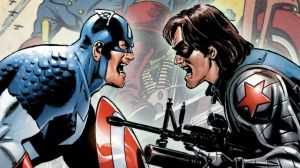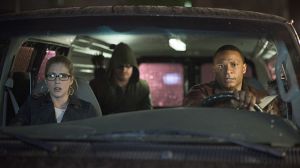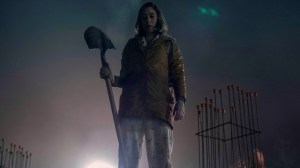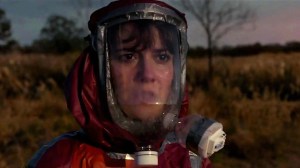Chip Zdarsky’s flagship Captain America series has quickly established itself as a bold, if not brutal, examination of what it means to carry the shield in a world full of suffering, seemingly endless wars, and terrible truths. This is not the Captain America of the MCU, nor is it a series that plays on the tried and true classic themes that typically apply to Steve Rogers. Instead, Zdarsky immediately throws Steve Rogers into a grim new current-day reality, where the idealistic hero of a bygone era must confront the harsh and messy nature of modern military conflict and American foreign policy.
Videos by ComicBook.com
The man who carries the mantle of Captain America in the current day in the comic is David Colton—a man whose pieces of history have been shown to be both brave and mentally unstable in just three short issues. Colton’s Captain America forces readers to reckon with the darker aspects of the world and the heavy toll those take on the soldiers who fight in it.
Colton Is a Dark Mirror to Steve Rogers, but Is a Realistic Modern-Day Captain America


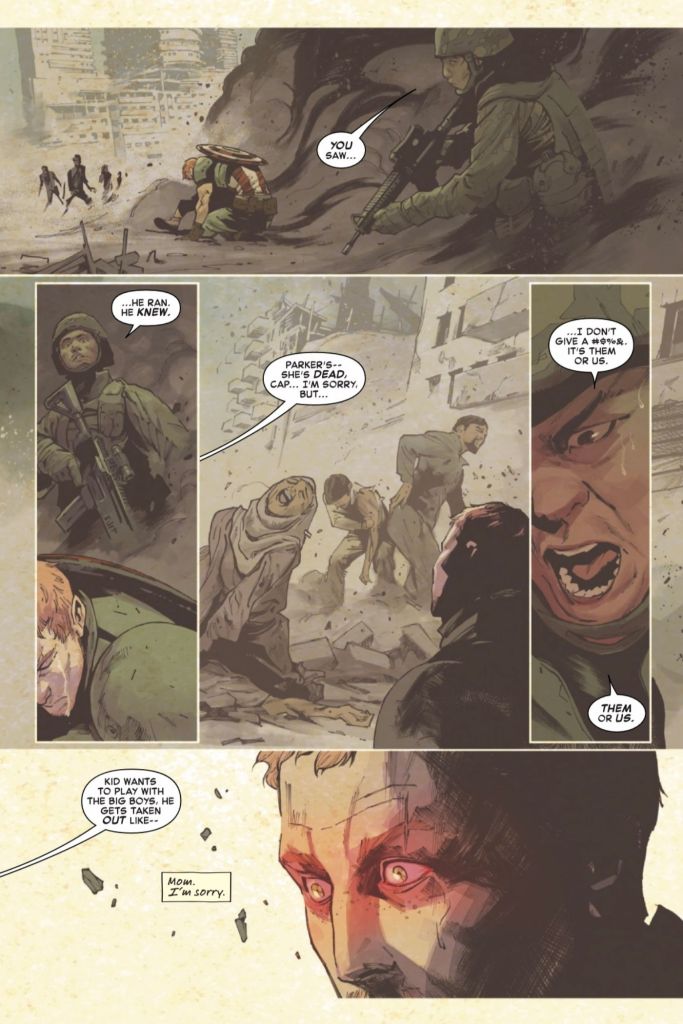
The first issue of Captain America immediately establishes a bleak tone from the start. But the brutality is dialed up to 10 in the latest issue. Captain America #3 presents a grim scene that is more war movie than comic book, showing the current Captain America, David Colton, and his squad in Iran. The details of a sudden, horrific car bomb attack are unflinchingly shown, not shying away at the graphic nature of the moment.
In the chaos of the moment, one of Colton’s men shoots and kills a child who was attempting to run from the explosion. Colton runs to the boy and gathers his lifeless body in his arms; the sheer paralyzing shock and trauma of the situation is unmistakable. It is this moment of shock, unnecessary death and bloodshed, and trauma that shatters Colton completely. When the offending soldier accuses the dead child in Colton’s arms of having knowledge of the attack, Colton is finally pushed over the edge. Turning on his fellow soldier, Colton snaps and beats him mercilessly, ultimately murdering him with Captain America’s shield.
The scene is terribly dark and far more chilling than even the most shocking moments in the Marvel Cinematic Universe. John Walker—the MCU U.S. government’s hand-picked replacement Captain America after Steve Rogers’ disappearance after Avengers: Endgame—kills a man ruthlessly with the shield in The Falcon and the Winter Soldier. The moment of raw unhinged rage is caught on camera by bystanders and inevitably, as it is in the digital age, goes viral. It is a fall from grace and a public spectacle. However, where Walker’s actions are a product of supersolider serum amplifying his pre-existing mental instability, Colton is not a victim of science gone awry.
Colton’s act is a deeper and more personal kind of horror. It is an act of a man who was already struggling with witnessing the traumas of warfare whose spirit finally broke in that moment. The cold-blooded nature of the murder, carried out with Captain America’s shield—the very symbol of justice and heroism—is a horrifying and dark reflection of what the shield can become in the wrong hands. The sequence in Captain America #3 is a harrowing depiction of the psychological and emotional cost of war; a sensitive subject matter that has rarely been explored with such unfiltered realness in a major Captain America comic. The violence is not glorified but is shown as a response of a soldier’s constant exposure to trauma coming to a deadly head, making it the moment Colton finally breaks a person and turns into someone that—in his own words—his own mother wouldn’t recognize.
The Clash Between Light and Darkness Sets the Stage for an Inevitable Showdown
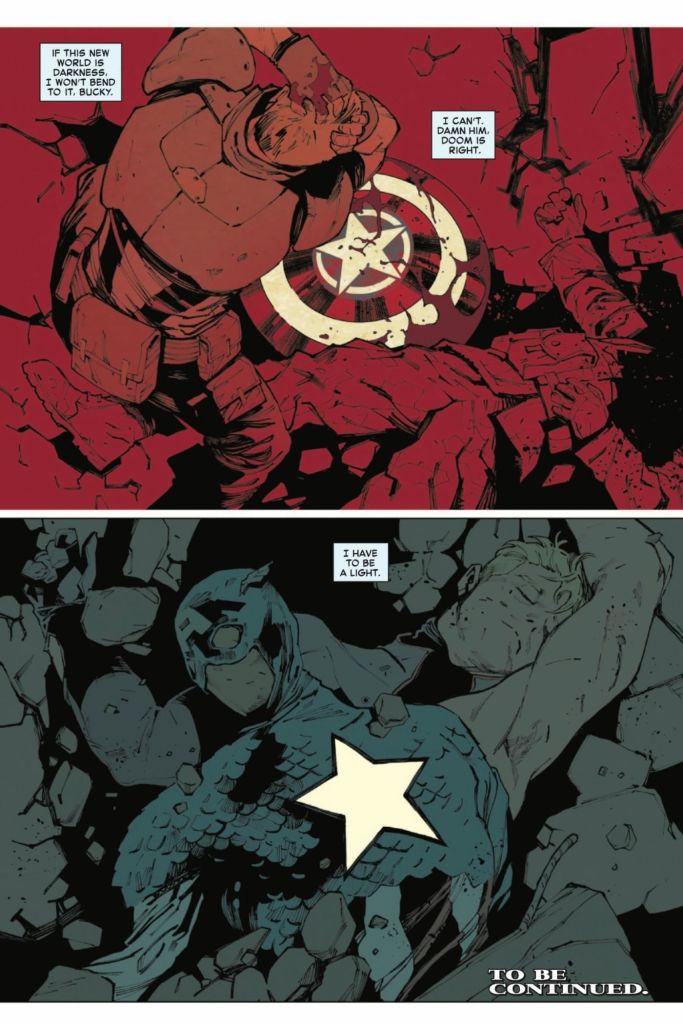
The last page of Captain America #3 sets up a powerful thematic “clash of the titans” that signals the direction of the series. The page shows Colton as a figure of “darkness”—a representation of modern America grappling with its legacy versus its current state of public opinion on international affairs. He is covered in the blood of the comrade he murdered; a disturbing image that symbolizes the nation’s own bloody conflicts and the consequences of actions abroad. Colton embodies the disillusionment, anger, and loss that are an unavoidable part of a world that has strayed far from the ideals it once championed. He is the brutal reality of the nation’s struggles; the raw truth of what happens when ideals clash with the messy and violent business of real-world power.
In contrast, Steve Rogers is depicted as a beacon of light and the pure embodiment of the idea of America. He represents the country as it strives to be, the dream of freedom, justice, and righteousness. This isn’t a simple-minded blind patriotism, but the enduring belief in the foundational principles that the nation was built upon. He is the shining white star against Colton’s dark one. The contrast of these two Captain Americas is a masterful stroke of storytelling and a testament to Schiti’s artwork, creating a dynamic that is more than a simple hero-versus-villain showdown. There is an ideological battle on the horizon between Colton and Steve—a conflict between the dream and the reality, the light and the darkness. Colton is not simply a mustache twirling cackling villain for Cap to punch, but a tragic figure who is a dark reflection of Steve himself and a consequence of the very world that Steve is fighting for, but also helped to create during WWII. Steve himself laments that he’s either too young or too old for this modern world, as he was fighting Nazis just weeks ago from his perspective. Now, the battles are no longer as clear cut.
The struggle that’s building between Colton and Steve is not about who is physically stronger, but about the very soul of America itself. This complex and emotional setup takes the series beyond a typical superhero story, making it a powerful and timely exploration of the ongoing internal struggle for the nation’s identity. It asks whether the ideals can survive the dark realities that threaten to consume them, and whether a man of light can save a man consumed by the darkness he was forced to endure.
What do you think? Leave a comment below and join the conversation now in the ComicBook Forum!

